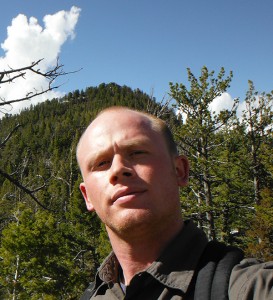 Long-Term Uplift of the Southern California Coast between San Diego and Newport Beach Resolved with New dGPS Survey Data: Testing Blind Thrust Models in the Offshore California BorderlandErik Haaker Friday, November 21st, 2014 |
||
|
||
| ABSTRACT Marine terraces and their respective shorelines provide information on vertical tectonic motions, thereby yielding constraints on rates and styles of deformation for underlying structures, such as blind thrust faults. In coastal southern California, the Oceanside Blind Thrust (OBT) has been inferred from offshore seismic reflection data, and its presence beneath the coast has been inferred to be the source of uplift of coastal San Diego County and the San Joaquin Hills in Orange County. The OBT is believed to be the result of a tectonically inverted Miocene detachment fault, and has been hypothesized as a late Quaternary seismic source underlying coastal San Diego and southern Orange counties. Late Quaternary motion on the OBT should deform and differentially uplift Quaternary marine terraces. To test OBT seismic source models, we collected high-resolution dGPS elevation data for the flight of Pleistocene marine terraces spanning the southern California coastal zone from central San Diego County northward through the city of Newport Beach in Orange County. We mapped the terraces by geomorphically tracing out and correlating individual shoreline exposures. In addition, we compiled subsurface geotechnical borehole data that supplement our survey data where urban development has obscured or obliterated the original geomorphic relationships. From these new data, the shorelines for terraces below 140 m elevation are found to remain at nearly constant elevation from San Diego northward through Camp Pendleton to Newport Bay. The lowest two terraces that date to MIS 5.1 and 5.5 (δ18O substages 5a and 5e, respectively) are flat though San Diego, show minor variation in San Clemente, and then slightly decrease in elevation towards the north into the vicinity of Newport Bay. These observations do not appear to support late Quaternary activity of the OBT, and raise questions about how to reconcile recent seismicity in the San Joaquin Hills with published models of an underlying blind thrust. |

